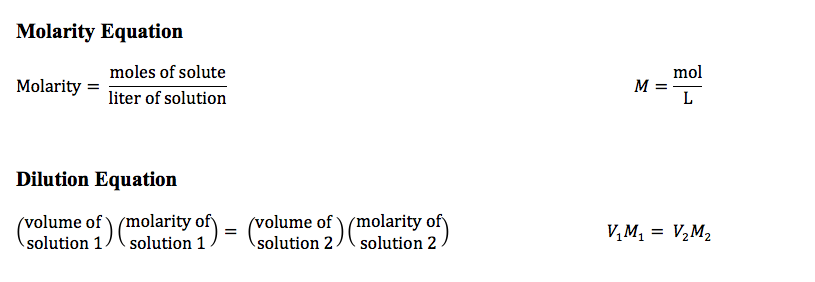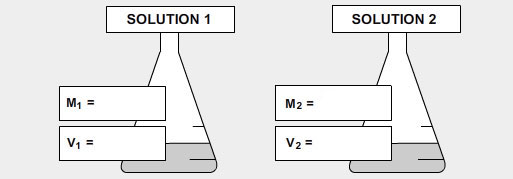Dilution calculations are similar to molarity calculations. As you are working through problems, it is important to first determine if you need to use the molarity equation or the dilution equation.

Graphic organizers can help make sense of all the numbers in a dilution problem. The shapes below represent flasks that hold solutions.

Every solution has a specific number of moles dissolved in a specific volume. In dilution problems, there will always be two different solutions: the initial concentrated solution and the resulting diluted solution. While in molarity problems, there will only be one solution.
![]() EXAMPLE: A student starts with 50 mL of 4.5 M Na3PO4 solution and dilutes it down to 250 mL. What is the concentration of the new solution? Complete the graphic organizer below with information from the problem.
EXAMPLE: A student starts with 50 mL of 4.5 M Na3PO4 solution and dilutes it down to 250 mL. What is the concentration of the new solution? Complete the graphic organizer below with information from the problem.
The information in the problem is organized. The problem can be identified as a dilution problem because there are two different solutions. Plug the numbers into the dilution equation.
Note: In dilution equations, the volume can be in mL or L, as long as both volumes are in the same unit.

Now, practice solving problems on your own.
![]() Directions: Read the following problems and determine which equation you would use to solve them. Then solve the problem on your own paper. When you are finished check your answers.
Directions: Read the following problems and determine which equation you would use to solve them. Then solve the problem on your own paper. When you are finished check your answers.